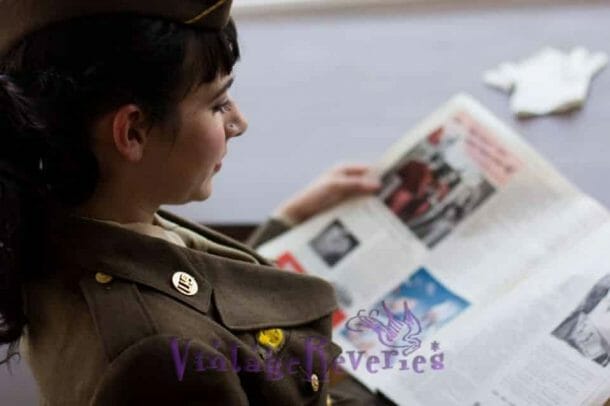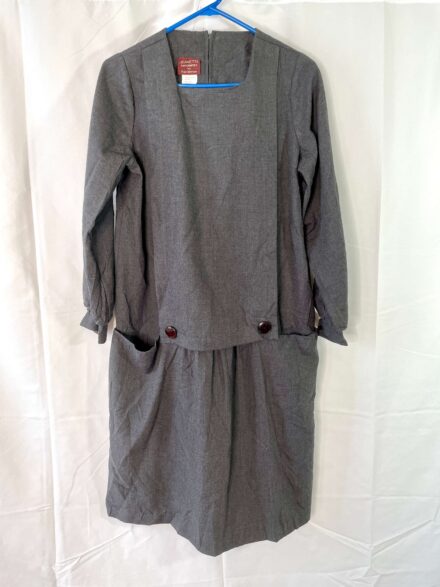
1935 slip, bra, and panty advertisements

Here is a glimpse into fashion and undergarments from a fascinating era—the mid-1930s. These catalog pages from the 1935 Chicago Mail Order Company Catalog showcase the variety of slips, bras, and panties available at the time. While flipping through these old catalog scans, I almost missed a pajama advertisement nestled among the lingerie! It’s truly interesting to observe how fashion, and specifically undergarments, evolved to shape trends and functionality for women during this period.
At the time, women’s intimate apparel was primarily crafted with functionality, comfort, and modesty in mind but often included elements of luxury and style. Slips, bras, and panties in the 1930s weren’t solely about utility; they also reflected the growing influence of the Art Deco movement, which emphasized clean lines, geometric patterns, and modern aesthetics, even in everyday wear.
A Peek At The Undergarments of the 1930s
Let’s explore what the catalog tells us about the undergarment styles of 1935:
- Slips: Slip fashion in 1935 was designed to be practical yet elegant. Made from soft biased-cut fabrics like knit rayon, silk crepe, cotton broadcloth, and even taffeta, these slips were intended to ensure that outer garments looked seamless and smooth. The bias cut allowed the fabric to hug the figure gently, providing an appealing, fluid silhouette under dresses and skirts. Lace and embroidered detailing were common embellishments, adding a touch of femininity and sophistication to these otherwise functional garments.
- Bras: The bras illustrated in the catalog represent the transition from corsetry to a more modern idea of support. Most styles emphasized natural shaping and modest coverage, aiming to create a flattering silhouette without the rigid structure of older corset designs. These early bras often included wide straps and full cups with minimal padding. By comparison, while they lacked the complexity of modern underwires, they offered burgeoning freedom of mobility while still aligning with the modesty standards of the time.
- Panties: Panties in the 1930s present a fascinating contrast to today’s styles. They varied from brief designs to bloomer-style options with more coverage. In fact, some of the longer bloomer-style panties could easily be mistaken for men’s shorts at first glance. This style wasn’t accidental; it was shaped both by necessity and by contemporary views of modesty and practicality. As women participated in more sports and physical activities, looser garments allowed for better airflow and movement.Materials used for these undergarments matched the rest of the intimate apparel selection, combining comfort, practicality, and an element of luxury. Some designs even featured small decorative details like bows, suggesting how even the most utilitarian clothing could have delicate embellishments.
Historical and Social Context
The 1930s was a transformative decade for women’s fashion. Alongside the economic challenges posed by the Great Depression, which began in 1929 and persisted throughout the 1930s, there was an increasing emphasis on practicality and affordability in clothing design. Clothing, including undergarments, needed to be durable and multi-functional while still appealing to women’s desire for elegance. Many women were now working outside the home or engaging in more active, public lifestyles, and undergarments evolved accordingly to accommodate these changes.
The widespread adoption of new fabrics like rayon was also a significant development in the fashion industry during this time. While natural silk and cotton remained popular for intimate apparel, rayon, often referred to as “artificial silk,” became a favorite due to its affordability, versatility, and softness. This innovation allowed for stylish undergarments to be more accessible to a wider range of households.
In the mid-1930s, Hollywood cinema also played a critical role in shaping trends, including lingerie. Actresses like Jean Harlow and Carole Lombard popularized sleek, body-skimming evening gowns, which required seamless undergarments like the ones featured in these catalog pages. The streamlined designs of slips, bras, and panties were all part of creating the iconic “Golden Age” glamour.
Pajama and Lingerie Ads: Small Surprises
In flipping through the catalog, I nearly overlooked a charming pajama advertisement nestled among the other intimate apparel. Pajamas in the 1930s were gaining popularity as part of loungewear, reflecting the shift toward greater comfort in women’s clothing. This trend mirrored the broader societal emphasis on leisure and relaxation, which became a subtle form of escapism during the economic strain of the era.
A Reflection on Vintage Undergarment Trends
Undergarments of the 1930s like those in this catalog illustrate the gradual progression away from restrictive Victorian-era corsetry to garments that prioritized movement, comfort, and style. The influence of modern art, growing advancements in textiles, and changing social roles all played a significant part in shaping these trends. While these undergarments might appear dated or unusual to modern eyes, they represent a critical step in the evolution of women’s clothing.
Take a look at the vintage scans below to explore these exquisite and functional undergarments from the 1935 Chicago Mail Order Company Catalog. Whether you’re a vintage fashion enthusiast or just curious about the past, these pages offer a delightful glimpse into the intimate apparel of nearly a century ago!
Materials Highlighted in the Catalog:
- Rayon (a new, popular fabric)
- Silk crepe
- Cotton broadcloth
- Taffeta
Stay Connected
If you love vintage fashion, don’t forget to check out other posts featuring late 19th and early 20th-century garments. Follow along on social media and subscribe to the newsletter to stay updated on more treasures from the past!
Below are my vintage fashion scans:





















You must be logged in to post a comment.